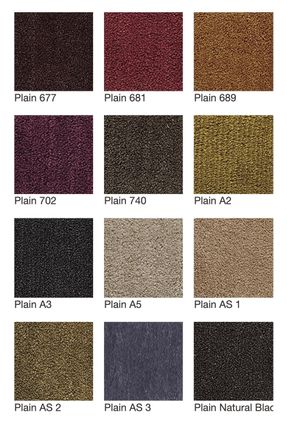RANI
RANI
Designed by Onno Raadersma & Marie Mees
These rugs, made entirely by traditional methods, are also in a regal class. In contrast to their masculine, somewhat rougher variant, the most important quality of the Rani is a distinct finesse.
The use of the best-quality materials, such as wool from the Tibetan mountains and silk or bamboo, gives this hand-knotted rug not just primal strength but also softness and elegance.
Within the collection you can choose from a striped pattern and designs based on stylised flower patterns. Made of 100% Tibetan wool, possibly supplemented with Chinese silk or bamboo. Can be used as a wall-to-wall carpet.
DESIGNER
His graphically ornamental designs therefore exude an unmistakably contemporary feel. It is his talent and his passion.
This is obvious from the highly graphic nature of his designs that combine a penchant for light Scandinavian design with a fascination for traditional shapes and the use of hand-drawn and floral motifs.
It is hardly surprising that many manufacturers and stylists at home and abroad are keen to engage him as often as they can. But that does not stop him going his own way: he set up MO-Studio with Rotterdam photographer Magri Geerlinks and he also regularly exhibits his own collection at design fairs in Belgium, Germany, France and Italy and beyond.
Her interior textiles are carefully designed to complement contemporary architecture and interior design.
Her fabrics are never farfetched or eye-catching, even though Marie Mees is a trendsetter in the world of textiles. The search for comfortable materials and beautiful textures is a never-ending source of inspiration. Marie Mees usually works
She attaches great importance to details and finish." -Chris Meplan (Elle Decoration & Standaard Magazine)
INFORMATION
METHOD
Hand-knotte
THICKNESS
- Total thickness (approx.): 12 mm. Exceptions: Rani silk, Rani double: 14 mm - Pile height above ground fabric (approx.): 10 mm. Exceptions: Rani silk, Rani double: 12 mm.
MATERIAL
- Back: Tibetan wool possibly combined with Chinese silk
- Weft: Cotton.
- Warp: Cotton.
FINISH
Longer sides have been edged finely with Tibetan wool. On the shorter sides a thicker edging in Tibetan wool.
PILE
- Composition - Tibetan wool possibly combined with Chinese silk. - Pile structure - Combinations cut pile and loop pile
DOWNLOAD
COLOUR
- Basic 35 colours - Colour differences: Slight colour differences between yarn batches are characteristic of dying natural materials and consequently cannot be valid grounds for complaints.
Tibetan wool is produced by hand in order to retain the lively character of the wool. Dying such a yarn results in a rich range of colour. A single-coloured Rani-carpet does not exist.
POSSIBILITY
- Rani plain: A The standard colours of the Rani plain are the same as for the Raja. - Rani structures: There are different line structures possible, in one or two colours. Rani silk and Rani double really come into their own in a single colour.
DESIGNS - NON STANDARD
Other designs can be created by combining Rani plain with various colour areas, side and pile height areas, cuts, structure areas or a combination of the possibilities mentioned.


























